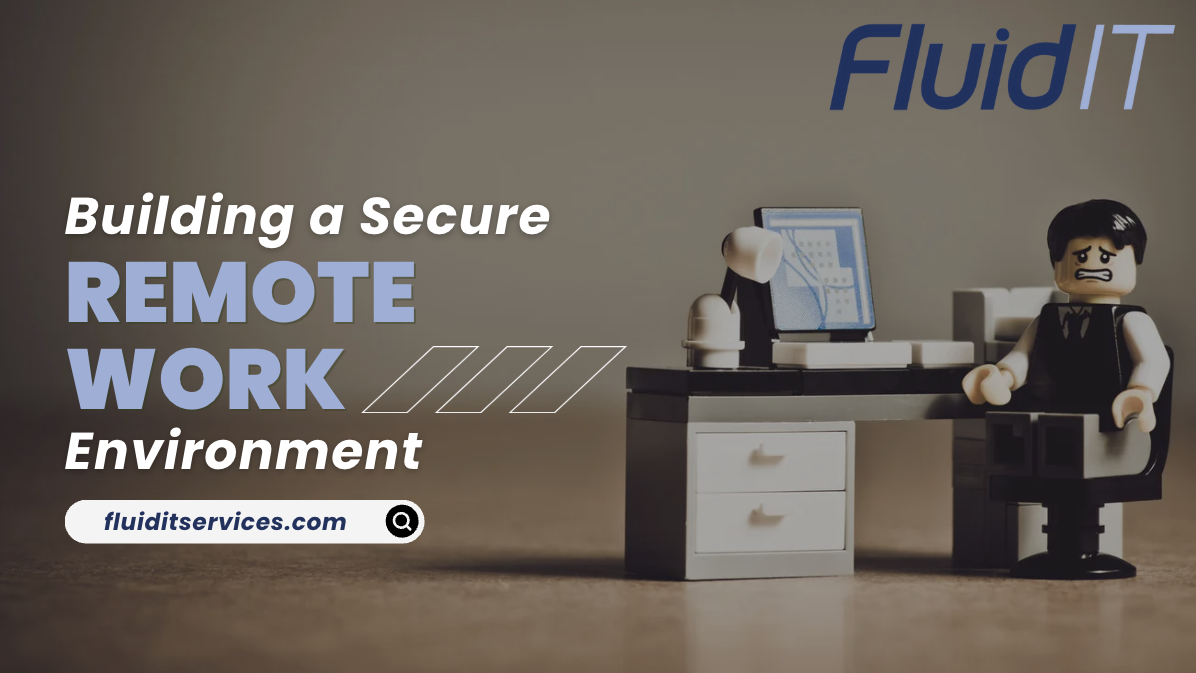Thanksgiving Travel Tips for DFW Businesses: Staying Secure and Compliant While Away
As Thanksgiving approaches, many professionals in Dallas and Fort Worth are preparing to travel and spend time with loved ones. While the holiday...
2 min read
Jacob Rooney
:
Jul 16, 2025 7:00:00 AM

Remote and hybrid work are now standard across Dallas-Fort Worth businesses. While these models offer flexibility and efficiency, they also introduce new security challenges that can put your company’s data, reputation, and productivity at risk. Whether your team is fully remote, hybrid, or occasionally working from home, securing your remote work environment is essential for business success in 2025.
Why Remote Work Security Matters
Cyber threats are on the rise, and remote employees are frequent targets. Unsecured home networks, personal devices, and inconsistent security practices can expose your business to data breaches, ransomware, and compliance violations. For Dallas businesses in regulated industries like healthcare, finance, or legal services, the stakes are even higher.
Key Steps to Secure Your Remote Workforce
Require multi-factor authentication (MFA) for all remote access to company systems and cloud applications. MFA significantly reduces the risk of unauthorized access, even if passwords are compromised.
A VPN encrypts internet traffic between remote employees and your company’s network. This protects sensitive data from interception, especially when using public or home Wi-Fi networks.
With MDM, you can control, monitor, and secure all devices that access company data. This includes enforcing password policies, remotely wiping lost or stolen devices, and ensuring only approved apps are used for work.
Ensure all devices and applications are regularly updated with the latest security patches. Outdated software is a common entry point for cybercriminals.
Regular cybersecurity training helps employees recognize phishing attempts, avoid risky behavior, and follow secure data handling procedures. Make training part of your onboarding and ongoing education.
Choose secure platforms like Microsoft 365 or Google Workspace for file sharing and team collaboration. Set permissions carefully and avoid using personal email or consumer-grade apps for business communication.
Deploy endpoint detection and response (EDR) solutions to monitor remote devices for suspicious activity. Set up real-time alerts and have an incident response plan in place to quickly address any threats.
Compliance Considerations for Dallas Businesses
If your business handles sensitive client data or operates in a regulated industry, be sure your remote work policies comply with HIPAA, PCI, or Texas privacy laws. Document your security measures, train your staff, and regularly review your compliance status.
Real-World Example: Securing a Dallas Sales Team
A local real estate firm transitioned to a hybrid work model and partnered with Fluid IT Services to secure their remote operations. We implemented MFA, set up a company-wide VPN, deployed MDM for all sales agents’ devices, and provided ongoing security training. As a result, the firm saw a 70 percent reduction in security incidents and improved client trust in their data handling practices.
The Bottom Line
Building a secure remote work environment is not just about technology—it is about protecting your business, your clients, and your reputation. By taking proactive steps and partnering with a local IT expert, Dallas businesses can empower their teams to work safely and efficiently from anywhere.
For more tips on remote work security and IT best practices, follow the Fluid IT Services blog. We are committed to helping Dallas-Fort Worth companies thrive in the new world of work.

As Thanksgiving approaches, many professionals in Dallas and Fort Worth are preparing to travel and spend time with loved ones. While the holiday...

For hybrid and remote-first teams, most day-to-day IT issues can be solved faster and cheaper without rolling a truck. On-site visits add travel...

The pace of commercial real estate in DFW never stops. You're constantly on the move, from showing properties in Fort Worth to negotiating contracts...